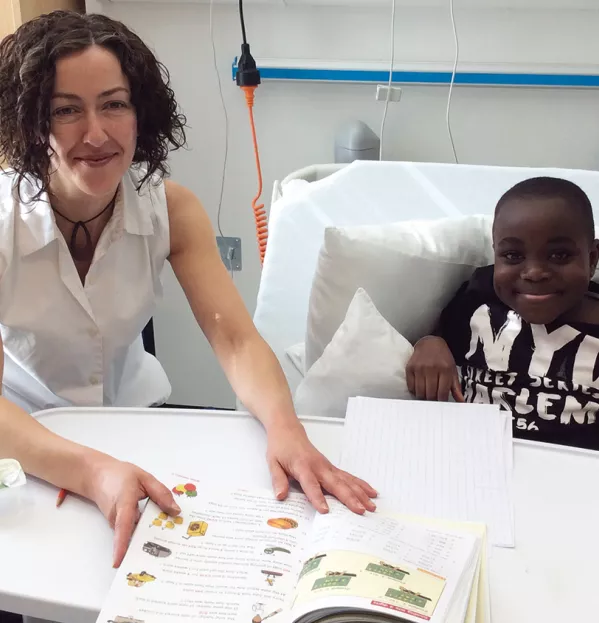‘Why should these kids miss out on their education?’

Teenagers at schools across Scotland have just finished sitting their exams. And it’s the same at the Royal Hospital for Children in Glasgow, where earlier this month two patients sat National 5 maths and English.
For these candidates, however, what many would consider the typical exam experience - a cavernous gym hall packed with desks and overwrought teenagers - was not to be.
Both pupils are battling cancer. One sat the exams in her hospital bedroom and the other in one of the small hospital classrooms. The latter candidate got up at 6am on the day of the exams to have his chemotherapy early because he did not want the machine bleeping and nurses interrupting while he attempted to answer questions.
Both teenagers had their own invigilators and signs stating “Quiet please, exam in progress” outside their rooms.
“All the rules still have to be adhered to,” explains Kathryn McLennan, a primary teacher based full-time at the hospital. She adds: “For these children, exams are something they can have control over when the rest of their life is out of control.”
McLennan came to do two weeks of supply in the children’s hospital 17 years ago - and never left. “I love my job,” she says. “Here, you are completely focused on the child. You build relationships with the kids but also with the parents. You get to know the whole family. There is real emotional involvement.
“These kids are penalised in so many ways. They miss out on so many different aspects of life - why should they miss out on their education or fall behind at school?”
The hospital education service in Glasgow consists of 10.2 full-time equivalent staff - a mix of primary and secondary teachers.
At the children’s hospital, the teaching is done by McLennan, her primary colleague Susan MacLeod and a secondary English teacher. There should be a maths teacher, too, but here, as in conventional schools, they have been struggling to recruit owing to the teacher shortage. The rest of the hospital education service teachers work in a purpose-built school that serves the adolescent psychiatric unit in Stobhill Hospital.
At the children’s hospital, the teachers engage with children who have a predicted stay of more than 10 days, teaching them for sessions of 30 or 45 minutes, usually one-on-one at the bedside but sometimes in small groups in one of two hospital classrooms.
Some days there are 30 or 40 children, but on other days there could be as few as three.
When Tes Scotland visits, there are six children on the list, and a timetable is drawn up in liaison with medical staff at the start of the day to establish the best time for teachers to engage with them. Whether the lessons are delivered as planned is another matter: a procedure might overrun, or the child might be with a doctor or too unwell.
You have to learn to take things in your stride, McLennan explains.
Because of the ebb and flow of patients, the teachers rely on the “invaluable” support of volunteers with a background in education.
Cathie Lees and Jill Rennie are a former headteacher and teacher respectively, and have been volunteering at the hospital every Wednesday since last August. There are five others like them recruited via the Glasgow Children’s Hospital Charity, which manages a total of over 200 volunteers and raised £4.6 million for the hospital last year.
The ideal, however, would be to have 10 volunteers, with one available every morning and afternoon of the week. The hardest thing for Lees and Rennie has been seeing children who are very ill - something that teachers in mainstream schools do not have to do.
The pair have also learned to steer clear of certain topics. Lees, who was head at Glengowan Primary in Larkhall, South Lanarkshire, says: “People talk about the weather all the time but these kids don’t know if it’s sunny - it’s just another day in hospital.”
But the teaching process is the same in hospital or in school, she says, and the iPad that the volunteers carry helps them to engage with the children.
Lees adds: “You listen to what they say and their answers, and you take it from there. The teaching is the same - the difference is they are in their pyjamas and attached to a drip.”
You need a Tes subscription to read this article
Subscribe now to read this article and get other subscriber-only content:
- Unlimited access to all Tes magazine content
- Exclusive subscriber-only stories
- Award-winning email newsletters
Already a subscriber? Log in
You need a subscription to read this article
Subscribe now to read this article and get other subscriber-only content, including:
- Unlimited access to all Tes magazine content
- Exclusive subscriber-only stories
- Award-winning email newsletters